Biophysical Chemistry of Proteins An Introduction to Laboratory Methods

Preț: 682,50 lei
Disponibilitate: în stoc la furnizor
Autor: Buxbaum, Engelbert
ISBN: 978-1-4419-7250-7
Editura: Springer Nature
Anul publicarii: 2011
Pagini: 550
Categoria: BIOCHEMISTRY
DESCRIERE
Focuses on the biophysical chemistry of proteins Presents an overview of the methods used in protein research Examines the possible applications and limitations of protein research
Undergraduate biochemistry courses cover what proteins do, as enzymes, receptors, hormones, motors or structural components. The much more interesting question is how can proteins achieve all these functions? Presented here is an overview of the methods used in such projects, their possible applications, and their limitations. Focusing on the biophysical chemistry of proteins, the text is accessible to those with a general background in chemistry, physics and mathematics, though a good understanding of protein structure and enzymology is required. The text may be used in courses of protein science, by students embarking on master- or PhD-thesis work in this area or by professionals who need a quick reminder about the essentials of a method.
Table of contents
Part One: Analytical techniques 1. Microscopy 2. Single molecule techniques 3. Preparation of cells and tissues for microscopy 4. Principles of optical spectroscopy 5. Photometry 6. Fluorimetry 7. Chemiluminescence 8. Electrophoresis 9. Immunological methods 10. Isotope techniques Part Two: Purification of proteins 11. Homogenisation and fractionisation of cells and tissues 12. Isolation of organelles 13. Precipitation methods 14. Chromatography 15. Membrane proteins 16. Determination of protein concentration 17. Cell culture Part Three: Protein modification and inactivation 18. General technical remarks 19. Amine-reactive reagents 20. Thiol- and disulphide reactive reagents 21. Reagents for other groups 22. Cross-linkers 23. Detection methods 24. Spontaneous reactions in proteins Part Four: Protein size and shape 25. Centrifugation 26. Osmotic pressure 27. Diffusion 28. Viscosity 29. Non-resonant interactions with electromagnetic waves Part Five: Protein structure 30. Protein sequencing 31. Synthesis of peptides 32. Protein secondary structure 33. Structure of protein-ligand complexes 34. 3D-structures 35. Folding and unfolding of proteins Part Six: Enzyme kinetics 36. Steady-state kinetics 37. Leaving the steady state: Analysis of progress curves 38. Reaction velocities 39. Isotope effects 40. Isotope exchange Part Seven: Protein-ligand interactions 41. General conditions for interpretable results 42. Binding equations 43. Methods to measure binding equilibria 44. Temperature effects on binding equilibrium and reaction rate Part Eight: Industrial enzymology 45. Industrial enzyme use 46. Immobilised enzymes Part Nine: Special statistics 47. Quality control 48. Testing whether or not a model fits the data Part Ten: Appendix 49. List of symbols 50. Greek alphabet 51. Properties of electrophoretic buffers 52. Bond properties 53. Acronyms
Undergraduate biochemistry courses cover what proteins do, as enzymes, receptors, hormones, motors or structural components. The much more interesting question is how can proteins achieve all these functions? Presented here is an overview of the methods used in such projects, their possible applications, and their limitations. Focusing on the biophysical chemistry of proteins, the text is accessible to those with a general background in chemistry, physics and mathematics, though a good understanding of protein structure and enzymology is required. The text may be used in courses of protein science, by students embarking on master- or PhD-thesis work in this area or by professionals who need a quick reminder about the essentials of a method.
Table of contents
Part One: Analytical techniques 1. Microscopy 2. Single molecule techniques 3. Preparation of cells and tissues for microscopy 4. Principles of optical spectroscopy 5. Photometry 6. Fluorimetry 7. Chemiluminescence 8. Electrophoresis 9. Immunological methods 10. Isotope techniques Part Two: Purification of proteins 11. Homogenisation and fractionisation of cells and tissues 12. Isolation of organelles 13. Precipitation methods 14. Chromatography 15. Membrane proteins 16. Determination of protein concentration 17. Cell culture Part Three: Protein modification and inactivation 18. General technical remarks 19. Amine-reactive reagents 20. Thiol- and disulphide reactive reagents 21. Reagents for other groups 22. Cross-linkers 23. Detection methods 24. Spontaneous reactions in proteins Part Four: Protein size and shape 25. Centrifugation 26. Osmotic pressure 27. Diffusion 28. Viscosity 29. Non-resonant interactions with electromagnetic waves Part Five: Protein structure 30. Protein sequencing 31. Synthesis of peptides 32. Protein secondary structure 33. Structure of protein-ligand complexes 34. 3D-structures 35. Folding and unfolding of proteins Part Six: Enzyme kinetics 36. Steady-state kinetics 37. Leaving the steady state: Analysis of progress curves 38. Reaction velocities 39. Isotope effects 40. Isotope exchange Part Seven: Protein-ligand interactions 41. General conditions for interpretable results 42. Binding equations 43. Methods to measure binding equilibria 44. Temperature effects on binding equilibrium and reaction rate Part Eight: Industrial enzymology 45. Industrial enzyme use 46. Immobilised enzymes Part Nine: Special statistics 47. Quality control 48. Testing whether or not a model fits the data Part Ten: Appendix 49. List of symbols 50. Greek alphabet 51. Properties of electrophoretic buffers 52. Bond properties 53. Acronyms
Categorii de carte
-Comandă specială
-Edituri
-Promo
-Publicaţii Callisto
-Cărţi noi
-- 670,95 leiPRP: 745,50 lei
- 226,80 leiPRP: 252,00 lei
- 463,05 leiPRP: 514,50 lei
Promoţii
-- 144,38 leiPRP: 262,50 lei
- 207,90 leiPRP: 231,00 lei
- 1323,00 leiPRP: 1470,00 lei


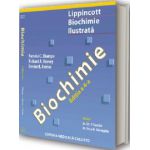
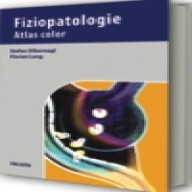


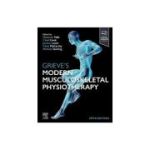


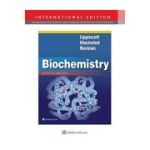
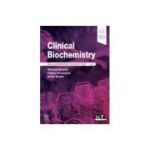


REVIEW-URI